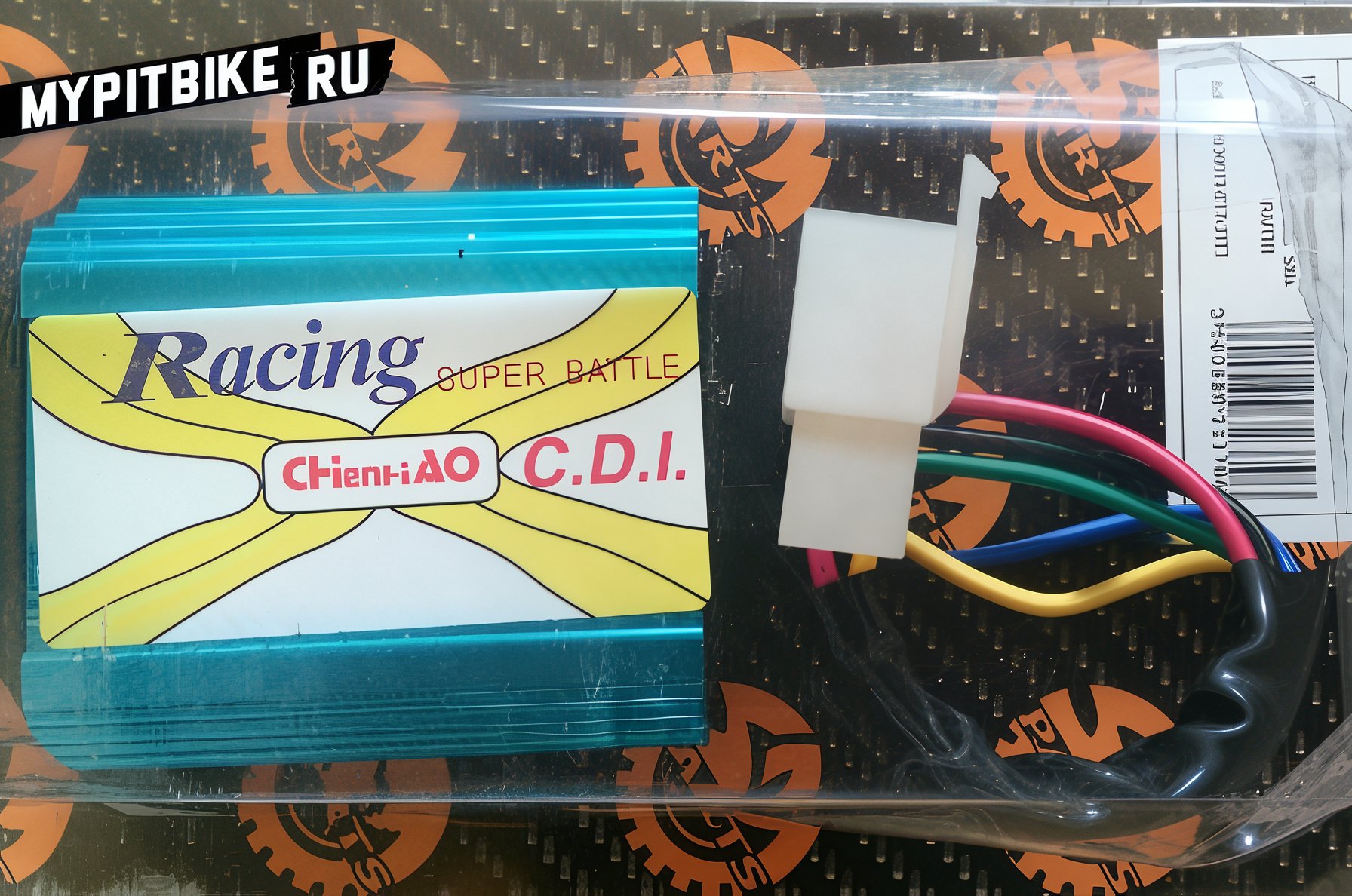Tuning a pit bike with your own hands
Hello, fellow pit bike enthusiasts!
Soon, the puddles will grow warm enough that falling into them won’t give you a chill. Yes, the prime season for pit bikers is almost upon us—hang in a little longer. Craving an explosive start to the new season? Then read on!

In this guide, I will share how to boost your pit bike’s torque without significant expense. This article targets owners of pit bikes equipped with LF 120, YX 125, and YX 140 engines. However, even if you own a different displacement, worry not—this content remains 50% relevant to your setup.
The tuning for your pit bike unfolds in two stages: installing a new CDI unit and adjusting the chain drive's gear ratios.
Drive Replacement
Let's alter the sprockets: diminish the front one and increase the rear one. Standard configurations, for instance, in YX 125 and YX 140 models, are front (engine) sprocket - 15 teeth, and rear (wheel) sprocket - 41 teeth. Calculating the gear ratio: 41/15 = 2.73. The higher the ratio, the "shorter" and "more powerful" the transmission, enabling the engine to swiftly achieve its necessary revolutions and rapidly boost speed.
How to Proceed?
Switch the front sprocket to 14 teeth and the rear to 43 teeth, yielding a gear ratio of 43/14 = 3.07. This ratio allows you to effortlessly and safely bring your pit bike onto its rear wheel.
The choice of a 14-43 configuration wasn’t haphazard. Firstly, you can retain the old chain, avoiding the need for a longer one—more savings! Secondly, opting for a 45-tooth rear sprocket demands filing the trap.
While this completes the initial tuning, be mindful of a slight trade-off—a 4.5 km/h reduction in top speed, which we’ll address in the next tuning phase.
CDI Replacement (Ignition Module)
Our friends from China have included a subtle restriction in your engine. Unknown to you? The standard CDI unit (ignition module or "brains") incorporates a cut-off feature, limiting the engine to around 8000 RPM, thus capping the engine's power potential.
To remedy this, let's replace the standard CDI:

Install a performance CDI:

Now, the engine's revolutions are in your hands, not the manufacturer's! This adjustment mitigates the speed loss caused by the chain modification.
Thus, the outcome: torque enhancement accompanies more dynamic acceleration without compromising top speed!